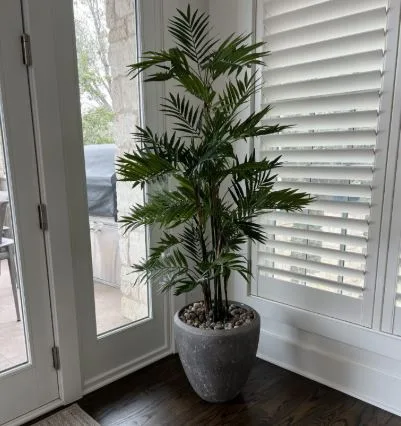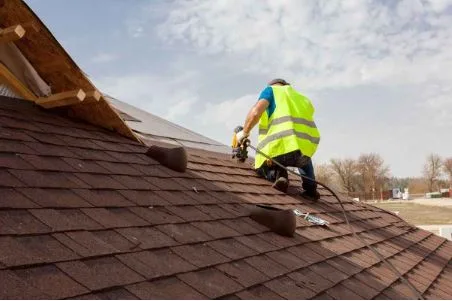The Verdant Revolution: Cultivating Biophilic Bliss with Interior Plant Design in Austin
In the bustling heart of Texas, where innovation meets natural beauty, a quiet revolution is taking root. This revolution isn’t about technology or politics; it’s about bringing the serene, life-affirming power of nature indoors. Specifically, we’re talking about the burgeoning trend of professional interior plant design Austin. Gone are the days of a lonely potted plant in the corner; today’s interior plant design is a sophisticated art form, seamlessly integrating living greenery into architectural spaces to create environments that are not only visually stunning but also profoundly beneficial for well-being. From minimalist modern homes to expansive commercial offices, the strategic placement and thoughtful selection of indoor flora are transforming sterile interiors into vibrant, breathable ecosystems.
The Biophilic Imperative: Why Nature Belongs Indoors
Our innate connection to nature, known as biophilia, is not merely a preference but a fundamental human need. In an increasingly urbanized world, where concrete and steel often dominate our daily landscapes, the absence of natural elements can lead to a sense of disconnect and even stress. Interior plant design directly addresses this imbalance by reintroducing natural patterns, textures, and life into our built environments. This isn’t just about aesthetics; it’s about creating spaces that resonate with our biological programming, fostering a sense of calm, productivity, and overall happiness.
Beyond the Green Thumb: The Art and Science of Professional Plantscaping
Professional interior plant design goes far beyond simply buying a few plants from a nursery. It’s a multidisciplinary field that combines horticultural expertise with design principles, understanding of light, humidity, and airflow, and a deep appreciation for the aesthetic and psychological impact of plants. A skilled interior plant designer considers various factors to ensure the longevity and vitality of the plants, as well as their harmonious integration into the existing decor.
Considerations for Optimal Plant Integration:
- Light Levels: Assessing the natural light available in a space is paramount. Different plants have vastly different light requirements, from low-light tolerant varieties to those that thrive in bright, direct sun.
- Humidity and Temperature: Understanding the microclimates within a building is crucial. Some plants prefer high humidity, while others are more tolerant of drier conditions. Temperature fluctuations also play a significant role.
- Space and Scale: The size and layout of a room dictate the appropriate scale of plants. A sprawling Fiddle Leaf Fig might overpower a small room, while a collection of delicate succulents could get lost in a grand atrium.
- Architectural Style: The design aesthetic of the building influences plant selection. Modern spaces might benefit from sleek, sculptural plants, while traditional settings could be enhanced by lush, leafy specimens.
- Maintenance Requirements: Different plants have varying care needs. A professional designer will recommend plants that are suitable for the client’s willingness and ability to provide ongoing care, or offer comprehensive maintenance plans.
Health and Wellness: The Unseen Benefits of Indoor Plants
The advantages of incorporating plants into indoor spaces extend far beyond their visual appeal. Extensive research has highlighted numerous health and wellness benefits associated with interior greenery, making it a wise investment for both homes and businesses.
- Improved Air Quality: Plants are natural air purifiers, absorbing carbon dioxide and releasing oxygen. They can also filter out common indoor pollutants like formaldehyde, benzene, and trichloroethylene, leading to cleaner, healthier air to breathe.
- Stress Reduction: Studies have shown that the presence of plants can lower stress levels, reduce anxiety, and promote a sense of calm. The visual presence of nature has a soothing effect on the human psyche.
- Enhanced Productivity and Creativity: In office environments, plants have been linked to increased concentration, improved task performance, and a boost in creative thinking. A greener workspace can lead to happier, more efficient employees.
- Reduced Noise Levels: Larger plants with dense foliage can act as natural sound dampeners, absorbing ambient noise and creating a more tranquil atmosphere.
- Boosted Mood and Well-being: Simply being surrounded by living things can elevate mood and foster a sense of connection to the natural world, combating feelings of isolation and promoting overall well-being.
Crafting the Urban Oasis: Popular Plant Choices for Austin Interiors
Austin’s unique climate and vibrant lifestyle often influence the types of plants that thrive indoors. While personal preference plays a huge role, certain plants are consistently popular for their adaptability, beauty, and air-purifying qualities.
- Sansevieria (Snake Plant): Extremely low maintenance and tolerant of various light conditions, the snake plant is a favorite for beginners and busy individuals. Its upright, architectural leaves add a modern touch.
- ZZ Plant (Zamioculcas zamiifolia): Another incredibly resilient plant, the ZZ plant can withstand long periods without water and low light, making it perfect for offices or forgotten corners.
- Pothos (Epipremnum aureum): Versatile and easy to grow, Pothos comes in various variegated forms and can be grown as a trailing plant or trained to climb.
- Fiddle Leaf Fig (Ficus lyrata): A popular choice for its striking large leaves and dramatic presence, though it requires consistent light and humidity to thrive.
- Monstera Deliciosa (Swiss Cheese Plant): Known for its iconic split leaves, the Monstera adds a touch of tropical lushness and is relatively easy to care for with adequate light.
- Peace Lily (Spathiphyllum): Elegant and air-purifying, Peace Lilies produce beautiful white blooms and are good indicators of when they need water, as they droop dramatically.
- Dracaena: Available in many varieties, Dracaenas are excellent air purifiers and come in various sizes and leaf patterns, making them versatile for different spaces.
The Austin Aesthetic: Blending Modernity with Natural Elements
Austin’s design sensibilities often lean towards a blend of modern minimalism, bohemian charm, and a deep appreciation for the outdoors. Interior plant design in Austin often reflects this, incorporating plants that complement clean lines, natural materials, and a relaxed, inviting atmosphere. Designers here excel at creating installations that feel both contemporary and organic, blurring the lines between indoor and outdoor living. This might involve large statement plants as focal points, living walls that transform entire surfaces into vertical gardens, or thoughtfully arranged clusters of smaller plants to create intimate, natural vignettes. The goal is to enhance the existing architectural features while infusing the space with life and vitality.
Beyond Residential: Commercial Spaces Reimagined with Greenery
The benefits of interior plant design are not limited to homes. Businesses of all types are increasingly recognizing the strategic advantages of incorporating greenery into their commercial spaces.
Benefits for Commercial Environments:
- Enhanced Client Experience: A green, inviting lobby or waiting area creates a positive first impression and makes clients feel more comfortable and relaxed.
- Improved Employee Morale: A biophilic workspace contributes to a happier, healthier, and more engaged workforce, potentially reducing absenteeism and increasing retention.
- Brand Image and Identity: Companies focused on sustainability, well-being, or creativity can reinforce their brand message through thoughtfully designed plant installations.
- Acoustic Improvements: In open-plan offices, plants can help absorb sound, reducing noise distractions and creating a more focused environment.
- Biophilic Design Certification: For businesses pursuing wellness certifications, incorporating significant plant elements can contribute to achieving higher ratings.
- Defining Spaces: Large plants or plant groupings can be used to subtly divide open-plan areas, creating more intimate zones without the need for solid walls.
Investment in Well-being: The Long-Term Value of Plant Design
While there is an initial investment in professional interior plant design, the long-term returns in terms of well-being, productivity, and aesthetic enhancement are significant. Think of it not just as decoration, but as an integral component of a healthy, thriving environment. Just as good lighting and comfortable furniture are essential, so too is the presence of living, breathing elements that connect us to the natural world.
Maintaining the Verdant Vision: Ongoing Care and Support
The longevity of an interior plant design installation depends heavily on consistent and appropriate care. Many professional plant design services offer ongoing maintenance plans, ensuring that the plants remain vibrant and healthy. This typically includes:
- Watering and fertilization
- Pruning and cleaning
- Pest and disease management
- Replacing plants if necessary
This comprehensive approach allows clients to enjoy the beauty and benefits of their indoor greenery without the burden of constant upkeep, ensuring their investment continues to flourish.
Conclusion: Cultivating a Greener Future, One Space at a Time
The movement towards integrating nature into our built environments is more than a fleeting trend; it’s a fundamental shift in how we conceive of and interact with our living and working spaces. Interior plant design, particularly in a forward-thinking city like Austin, is at the forefront of this transformation, proving that beauty, health, and productivity can indeed grow hand-in-hand. By embracing the power of living greenery, we are not just decorating; we are cultivating environments that nurture the human spirit, enhance well-being, and contribute to a more sustainable and vibrant future. As we continue to seek balance in our increasingly digital lives, the solace and vitality offered by a thoughtfully designed indoor garden become an invaluable commodity, truly enriching the fabric of our daily existence. For those seeking to further understand the profound impact of nature on human health and well-being, exploring research on biophilic design can offer deeper insights into this transformative approach.
FAQs About Interior Plant Design in Austin
Q1: How much does professional interior plant design cost in Austin?
A1: The cost varies widely depending on the scale of the project, the types of plants selected, the complexity of the design, and whether ongoing maintenance is included. A small residential project might be a few hundred dollars, while a large commercial installation could range into several thousands. Most companies offer consultations to provide a customized quote.
Q2: Can I choose specific plants, or does the designer make all the choices?
A2: While designers will certainly recommend plants suitable for your space’s conditions and your aesthetic preferences, your input is highly valued. It’s a collaborative process where the designer’s expertise meets your vision to create a harmonious outcome.
Q3: How often do interior plants need to be watered in Austin’s climate?
A3: Watering frequency depends on the specific plant species, the size of the pot, the type of soil, and the environmental conditions (temperature, humidity, light). A professional designer will provide a tailored watering schedule and often offers maintenance services to ensure optimal care. Generally, it’s better to slightly underwater than overwater.
Q4: Do plants attract pests indoors?
A4: While it’s possible for plants to attract pests, a professional plant care service employs preventative measures and quick treatment strategies. Healthy plants are less susceptible, and proper sanitation and regular inspection minimize risks.
Q5: What is a “living wall” and is it suitable for an Austin home or business?
A5: A living wall (or vertical garden) is a self-sufficient vertical garden that is attached to a wall. It can be suitable for Austin homes or businesses, offering significant aesthetic impact and air purification, especially where floor space is limited. They require specialized installation and a robust irrigation system, often making them a higher-end option.
Q6: How long do interior plants typically last?
A6: With proper care, many indoor plants can live for many years, even decades. Factors like light, watering, nutrition, and pest management all contribute to their longevity. A good plant care program can significantly extend the life of your indoor plants.




